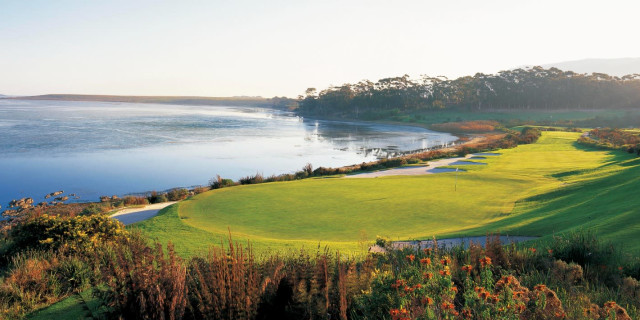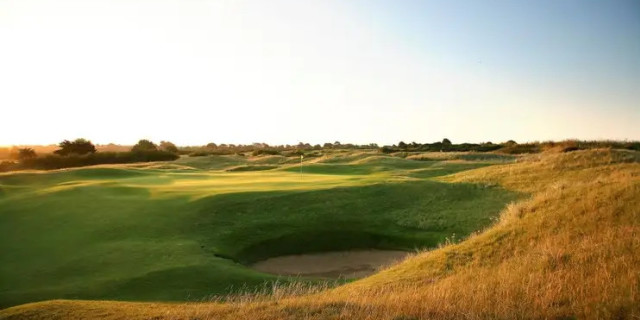
Royal St George's Feature Review
Review by Golfshake Ambassador Andrew Picken
Legendary 13-time Open Championship venue Royal St George's is justifiably a bucket list course for any keen golfer. In preparation I had reviewed video footage of Darren Clarke and his epic win at this same hallowed ground in 2011.
This is links golf at its very finest. I have to admit to being nervous as we drove down towards the club but found the clubhouse and surrounds homely, traditional and welcoming. This surprised me a little as I had undertaken some research around the history and traditions of this wonderful venue and found it to be packed with quirky traditions.
I was aware of the artisan traditions in golf where membership was encouraged in return for support and assistance with course maintenance. RSG does not have artisan golfers. They have permit holders but it means much the same thing.
Rated Highly Recommended on Golfshake
They have their own clubhouse that has a view over the 18th green. In my opinion it is better positioned than the main clubhouse that does not really afford a decent view of the closing hole where so many epic golfing battles have been concluded.
There are two driving ranges, one for the sole use of the membership. There are no start sheets at this facility. A box is placed on the tee to indicate the length of the day. In this box is a slot into which a ball is placed and then you wait your turn. If you are lucky enough to get a tee time ensure you are aware of the local rules regarding two balls and four balls so that you are not disappointed. Occasionally tee times booked through a third party do not have this information passed onto the players and this can lead to frustration.
I love the writings of Bernard Darwin, who was known renowned as being golf correspondent of The Times. He painted pictures with words unlike any other golf writer.
He described his anticipation of a return to Sandwich as being exactly like that of the excitement of a young girl being told she may have the puppy she has longed over for many years. She was so excited that she went and hid under the table to better the savour the wondrous news. This was my first time at Royal St George's but I can assure you that I understand why he felt that way.
Visitor Information
Visitors are welcome at St George's from Monday to Friday (except Public and Bank Holidays). Saturday and Sunday are reserved for members. Visitors may play having been introduced by a member, or on production of a letter of introduction from their Club Secretary to [email protected]. Visitors will be asked to produce evidence of a handicap of 18 or better. The Office will provide advice as needed.
On Monday, Wednesday, Thursday and Friday, the 1st tee is reserved for Members until 0940 and from 1300 to 1410. However, visitors may start from the 10th tee if they require earlier starting times.
Two-ball (singles or foursomes) golf is the normal format on all days except Tuesday.

Visitors are welcome to play Three and Four-ball golf on Tuesdays starting from 0800 to 1030 (1000 during Winter Period) and then from 1330 to 1530 (not applicable during Winter Period). There will be no Three and Four-ball golf permitted in August.
Only wide wheeled trolleys may be used on the course - these can be hired from the Professional. Buggies may only be hired on production of a doctor's certificate and must be booked in advance.
There is a Caddie Master (Sean Meleady) in charge of the players on the course. He organises the storage and maintenance of members clubs and sorts out Caddies many of whom are permit holders.
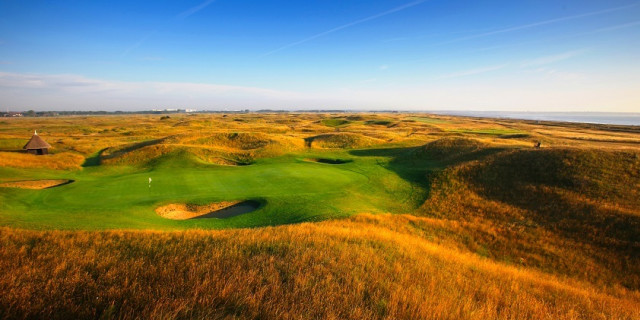
The Professional Shop , as you would expect is a top quality facility. Many other courses would love the chance to have a window display of the sort that greets members and visitors daily.
I used a caddie and found this to be invaluable and very good value. This is a difficult course that requires experience to manage properly. The caddies assisted massively. If you are able to take on this challenge give serious consideration to having one by your side. There is a minimum payment of £50 before gratuity paid directly to the caddie. Given the extra insight that they are able to add to the experience this in my view represents good value.
As you would expect the greens and infrastructure are of the highest order. Several subtle changes are being made in anticipation of the 2020 Open. There is also a programme of altering bunkers including edges to make them more natural and traditional in appearance. Having seen the results of initial work to these bunkers I have to say that they are looking fantastic. I much prefer bunkering to be naturalistic and they are certainly providing this impression.
Course Overview
Sandwich is a layout that is always developing and changing to meet with the technical and equipment enhancements in the game. A review of this club makes for a fascinating study in the development of golf course architecture for over a century. For instance, the shift from gutta-percha to the rubber core Haskell brought alterations to the course prior to hosting the 1911 Open. I find it fascinating that we still discuss technological advancements with the distance players hit the ball etc and courses being altered and lengthened to diminish the use of “new” technology.
There is not a weak hole on this course. There is no respite from its quality, subtlety and sheer fun. The topography and fairways have to be seen to be believed and my previous experience of them through the TV lens did not do them any sort of justice.
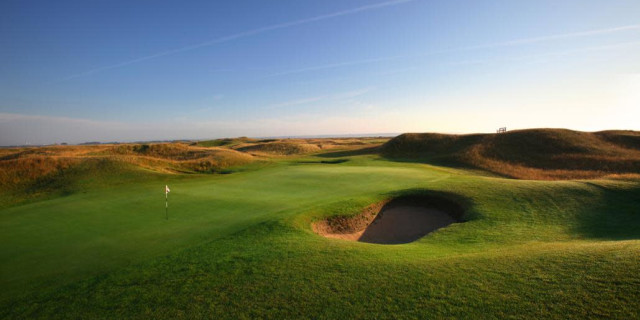
Having completed the course in one over par I was left in a state just short of ecstasy. My biggest problem is that I want immediately to go out and do it again! This isn’t going to happen soon but I can assure you that I will return to this wonderful links again.
The overall layout is similar to a butterflies wings with two loops coming back to the centre. This ensures that whatever wind is in play that day it will impact differently upon every single hole on the course.
Favourite Holes on the Front 9
1st, Par 4, 440 Yards
The rumpled fairway lets the golfer know that this is real links golf, with allowances needing to be made for the stance and wind. The first bunkering scheme devised by Dr Laidlaw Purves had one large bunker guarding the high left side of the green. Today, there are a necklace string of three bunkers cut into that same ridge just prior to the green, with the bunkers extending more across the front of the green than previously. Also, a bunker was later added seventy-five yards from the green in the middle of the fairway.
I played this opening hole to par despite the sharp wind that was blowing across the links and could not have conceived of a better way of spending an afternoon. I avoided The Kitchen, a valley of substantial proportions, purely because of the input of my caddie as my intended line off the tee was completely wrong. Standing on this world famous tee with its thatched roof was exciting and disconcerting in equal measure.
2nd Hole, Par 4, 415 Yards
Royal St. George's has the ability to continue to host Open Championships in part because it has the luxury of space for non stop development. Thus, its holes can grow in length and keep pace with the modern game. This hole is a perfect example of the ongoing development and refinement that is synonymous with the course.
When Dr Purves and Ramsey Hunter laid it out in the days of hickories and gutta-percha balls, the hole measured just over 300 yards, calling for a drive and a niblick. When steel shafts took over the game, the tee was moved to the right and back, bringing the hole to 375 yards. Then for the 2003 Championship, the same playing angles were preserved but the tee was stretched back another forty yards. Despite nearly 120 years of play to the same green site, golfers are still likely to play a driver/nine iron to this hole.
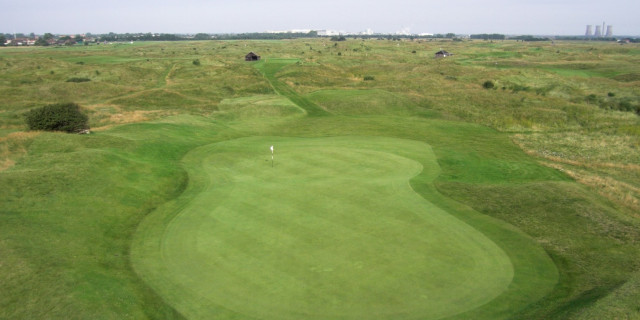
4th Hole, Par 4, 495 Yards
I was told that the ideal tee shot is over the second deepest bunker in England, behind only the sixth fairway bunker at St. Enodoc. Many a double bogey and worse was scored here in the 1985 Open when it averaged 4.66 for the world's best golfers. I walked away with a six that I considered to be a “pleasurable achievement” to steal a line from Dr Alister Mackenzie. As a golfing experience this was a majestic one.
5th Hole, Par 4, 416 Yards
This provides the first real view of the sea. The fairway is patrolled by a band of bunkers. The green was built on the dune's left side. The ideal line is to a small plateau known as Campbell’s Table after a perfect drive in a Walker Cup match to this piece of land that had previously been the tee for the sixth hole by the American player Bill Campbell.
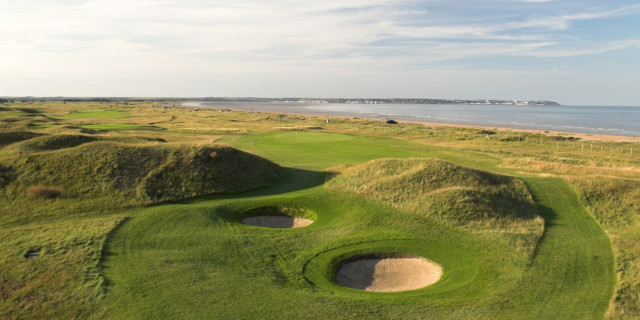
6th Hole, Par 3, 170 Yards
The Maiden was named after the dunes that towering around it. It has a long two tiered shaped green set at an angle to the tee. When Royal St. George's first opened, it was enormously difficult, given the number of blind shots combined with cross hazards. The winning score for the 1894 Open was 326!
Favourite Holes on the Back 9
10th Hole, Par 4, 412 Yards
Drives should ideally favour the left side of the fairway to avoid facing severe mounds and hillocks that could lead to a blind approach shot into the green. There is a dramatic drop off at the back of the green so many will favour a shot to the apron allowing the ball to feed towards the hole rather than chance a shot being too long into a very troublesome area. This is a beautiful green. I recorded a five and all I could think of as I walked from the green is that this is the hole made famous by Ian Fleming when he described it in James Bond's match in Goldfinger as the most dangerous par four in England.
Tom Kite would not disagree as this hole ruined his 1985 Open bid.
11th Hole, Par 3, 242 Yards
For its first eighty-five years, this was a well regarded par four, but it was changed into a par three using the old 10th green. It was very tricky to read and I was almost pleased with a three-putt putt such is its complexity. I remember my father in law's reaction when he was watching Sir Nick Faldo on TV in the fourth round of the epic 1993 Open. Faldo’s tee shot literally hit the flag, stopping inches away. The green is angled from front right to back left, a high bank right to work the ball off, and a bunker front left.
14th Hole, Par 5, 550 Yards
Strategy for this hole is determined by the wind direction and strength. Greg Norman hit the perfect penetrating drive in the fourth round in 1993 Open after watching his fellow competitor Bernard Langer cut it over the boundary fence a few moments earlier.
When Purves first laid out this hole, the Suez Canal that crosses the fairway was quite difficult to carry in two with hickories and a gutta-percha ball. In today's modern game, the long driving golfer is more worried about the canal off the tee.
This holes provides another illustration of the continuous changes and improvements to the course. In 2004, the green was moved back forty-three yards and two bunkers were added in the fairway sixty yards from the green, in line with the left edge of the green.
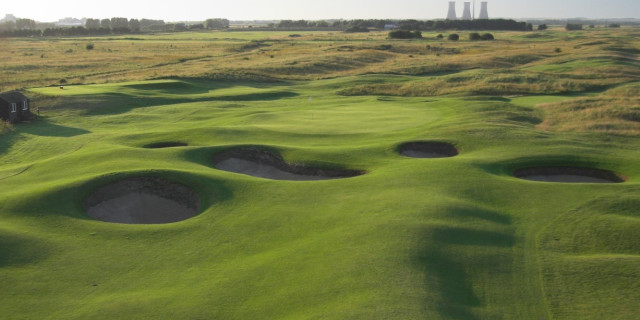
16th Hole, Par 3, 161 Yards
This hole is another steeped in tradition and history. It is surrounded by a series of deep bunkers protecting a green that is relatively large for a hole of this length.
This is where in 2003 Open, Thomas Bjorn chased after a right pin location, only to see his tee ball come to rest in the right greenside bunker. He struggled with the bunker shots and recorded a five losing a golden opportunity to lift the Claret Jug. This was also the venue for the first televised hole in one by Tony Jacklin in the 1967 Dunlop Masters.
18th Hole, Par 4, 456 Yards
This is a great finishing hole and it came much too soon for my liking. The eighteenth fairway features pronounced hump and swales in the landing zone area for tee shots. A final string of cross bunkers bisect the fairway 120 yards from the green, which is made by a mean pit bunker front-right and Duncan's Hollow on the left.
Duncan’s Hollow was named after George Duncan who ruined a great final round to miss the chance of tying in the 1922 Open Championship. 63 years later, Sandy Lyle also failed to make it up the hill from the same hollow but two excellent final shots later secured his Championship.
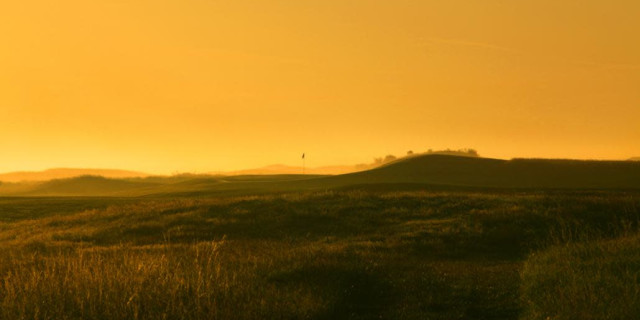
Recap
Royal St George's is a sprawling, rumpled, ruffled, natural expanse of links land that presents the game in its rawest and traditional form. It’s wonderful, a comprehensive golfing experience – complete with uneven stances, blind shots and unpredictable bounces. This is a golfing day I will remember for many, many years.
About the author

Andrew Picken is a Golfshake ambassador and prolific golf traveller who writes course reviews, travel features, and destination guides. A passionate golfer for over two decades, he plays regularly across the UK and Europe and is involved in several golf societies and charity events. Andrew is committed to promoting the game and showcasing the variety of golfing experiences available to enthusiasts of all abilities.
Related Content: Kent

